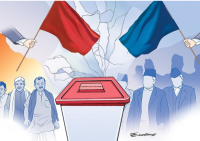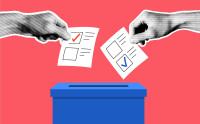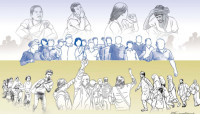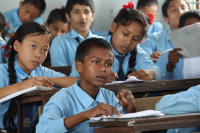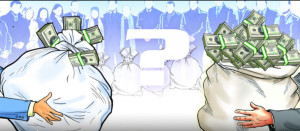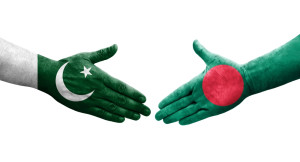Columns
Authoritarianism with a new face
Nothing about Hridayendra suggests he is fit to rule, except the fact that he was born into a royal family.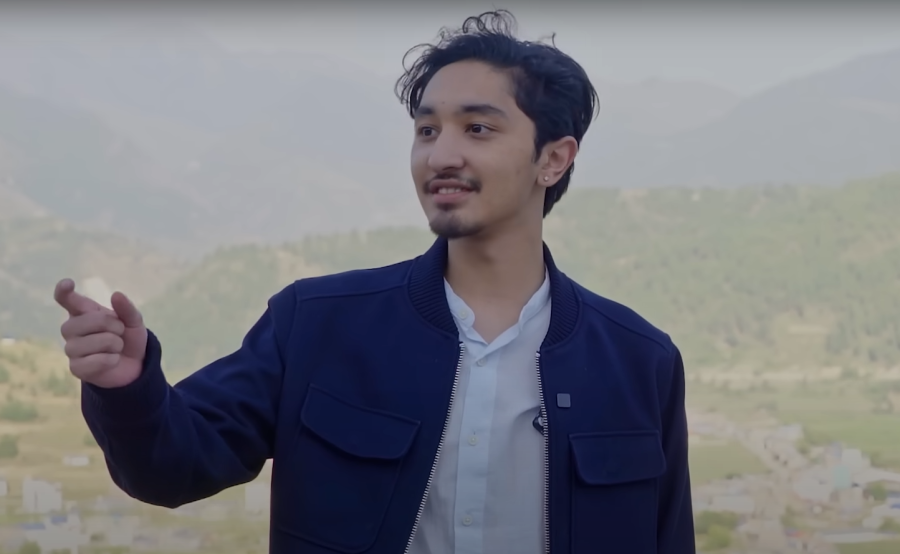
Krishna Sharma
Nepal’s monarchists know they cannot sell the past. Former King Gyanendra’s authoritarian rule is remembered for suspending the constitution, censoring the media, dismissing a government and arbitrary arrests of journalists. His son Paras, often seen as the embodiment of unchecked privilege, cannot be credibly marketed to the public. So the royalists are all-in on their new solution: Repackage the monarchy and the Hindu state with a fresh, new face.
A calculated return
Hridayendra Bir Bikram Shah’s coming into the public eye, through carefully choreographed appearances, is no accident. His recent vlog, made public on his 23rd birthday, paints him as a youthful, untainted figure aimed squarely at Nepali youth who did not experience the monarchy firsthand. As some commentators have noted online, this is precisely when you would unveil him if you were eyeing the 2084 general elections.
In the video, which now has close to a million views on YouTube, Hridayendra Bir Bikram Shah is seen wearing a Dhaka topi with Tika on his forehead, while still donning a Western-looking shirt/jacket and pants. The aim is to evoke familiarity and legitimacy with a broad Nepali audience, while subtly communicating that he is at the same time forward-looking and ‘relatable’ to today’s Nepali youth. It is a deliberate and visual public relations (PR) move. Similarly, the use of both Nepali and English words in his speech (although, could have been done partly because of his comfort) highlights a similar contrast.
It has been close to two decades since the monarchy was uprooted. The Nepali youth has only a vague memory of the living conditions during the rule of the monarchy, if they remember anything at all. This means the monarchy is now old enough that people are starting to have an ‘authoritarian nostalgia’. Research has suggested that voters can express attachment towards authoritarian successors, especially in maturing democracies. In Nepal’s case, the pro-monarchists’ clear choice seems to be Hridayendra.
Monarchy and the Hindu state, a paired agenda
Monarchy’s revival in Nepal, through current efforts linked with Hridayendra as well as in its past efforts with Gyanendra, is rarely discussed in isolation. For many royalist groups, it is closely tied to the demand to restore Nepal as a Hindu nation, a status it officially held until the 2007 declaration of secularism through the Interim Constitution. Rather than just being nostalgia from the past, it is a political project that appeals to segments of the population unsettled by rapid social change, migration and the perceived erosion of cultural identity. In recent years, pro-Hindu movements have also drawn energy from India’s Hindu nationalist turn. It could be argued that since Narendra Modi of the Bharatiya Janata Party became the Indian Prime Minister in 2014, Nepali actors who present secularism as a foreign imposition have been emboldened.
It is not just India, though. Populist and authoritarian politicians have gained popularity across Western democracies as well. Prominent examples include Donald Trump in the United States, Benjamin Netanyahu in Israel, Boris Johnson in the UK and Jair Bolsonaro in Brazil. It seems individuals around the world are not just tolerating populism and authoritarianism, they are encouraging it through their electoral choices. The difference, at least so far, is that authoritarian leaders in the West are testing the limits of democracy and its checks and balances, while in Nepal, the monarchists are challenging the very survival of democracy.
Readers should keep in mind that under the monarchy, the King was officially regarded as a protector of Hinduism. Restoring the monarchy is therefore only the first step towards reshaping the country’s constitutional identity, with significant implications for religious minorities, civil liberties and Nepal’s fragile commitment to pluralism.
Frustration over current leaders
The resurgence of pro-monarchy demonstrators also comes at a time when frustration over current leaders is at its peak. This agitation is largely driven by a lack of employment opportunities, rampant corruption, and, at least in part, by recently proposed legislation designed to protect the political elite. Recent examples of the latter include a controversial decision that paves the way for federal ministers to determine their salaries. Likewise, another bill looks to legalise polygamy, while earlier bills aimed to regulate social media and allow amnesty for ‘political’ criminals.
Exploiting this disillusionment over Nepali democracy and its rulers, the royalists seek to offer an escape from the current state of affairs. And it is a tempting offer for those who see no hope in the current political leaders. For many, the promise of a familiar system untainted by today’s political squabbles feels like a lifeline.
What we must not forget, though, is that for all its flaws, the current system allows ordinary citizens to vote to elect their representatives. In the last general elections, for example, the Rastriya Swatantra Party won a significant number of seats in the federal parliament. Similarly, Balendra Shah’s rise as the mayor of the Kathmandu Metropolitan City without the backing of any political party tells us that alternative voices can break through. While the control remains concentrated in the hands of the old parties like the Nepali Congress and the UML, this is proof that there is room for others to come through if they can win over the public trust.
Conclusion
Hridayendra’s PR makeover may succeed in softening the monarchy’s image in Nepal, as can be seen through the countless likes and comments on his YouTube videos and shares across other social media platforms. It may even make the restoration of the monarchy appear harmless. However, nothing about Hridayendra suggests he is fit to rule, except, of course, the fact that he had the privilege of being born into a royal family. And make no mistake: Reinviting the monarchy, in any form, is to restore an institution that once dismantled our democracy and may well be looking to dismantle it again. No carefully staged photo op can rewrite that truth.




 17.12°C Kathmandu
17.12°C Kathmandu

